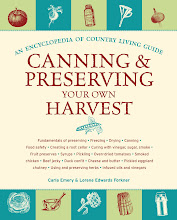Wednesday, August 21, 2013
Harvesting Grain the Environmentally-Friendly Way
Gas-powered mowers and machines aren't the only way to mow your lawn or harvest your grain. Carla Emery shares tips for picking the right environmentally-friendly tool to use in your yard and field.
Sickle. You can cut grains and grasses with a sickle. (The sickle-bar tractor mowers used to cut hay aren’t suitable for grain because they run over it, shelling out some of your grain.) Lightweight hand sickles are available at most hardware stores. The sickle is best for short, rough, or patchy growth. It has a short handle and a long blade, which may have a straight or a serrated edge; serrated is better for grain cutting. The sickle was humankind’s first harvesting implement, but even a very strong and hard-working person couldn’t cut more than half an acre a day with one. It a misery to the back to use it for very long because for each cut, you have to bend over in order to cut near ground level: grab a clutch of grain heads with one hand; put in the sickle blade with the other, starting on the opposite side of the grain stalks from you and pulling it toward you with a sawing motion. The goal is to cut the stalks with such a gentle motion that you minimize the loss of grain to spillage. If you can cut the heads higher up on the stalk, it’s not so hard on your back, and that’s the way it’s done with a “harvest knife.”
The Harvest Knife. An Asian version of the sickle is the harvesting knife. It’s small. You hold it in your hand, bend your finger around the plant stem, and sever it. You continue holding the grain head in your knife hand and cut new ones to add to it until you get a handful, which is then transferred to the other hand until it’s holding a bunch large enough to bundle or put in a container. The blessing of this method is that it works very well with grain that has fallen over or that has unevenly ripe areas in the field or on various parts of the plant itself.
Scythe. A scythe is far better than a sickle for harvesting grain. There are different styles of scythe for grain, weed, or bush mowing. A scythe has a handle about 6 feet long, called a “snath,” and a long, gently curved blade, which is the “scythe” proper. The snath has a handhold on it that enables an easy, comfortable, swinging motion, each arc swinging into the grain in front of you and cutting a swath about 2 feet across. (Trying to go wider can do more harm than good to your motion.) The scythe’s blade should come against the grain at about a 45˚ angle rather than squarely, at a 90˚ angle. Cut the stalks about 3–4 inches above ground. If there is no cradle, just let them fall in that long swath.
With practice you’ll soon get a natural, rhythmic, unhurried but steady motion with it that you can keep up for a long time and actually enjoy. You’ll discover that scything in different varieties of grain differs as stalk stiffness differs. In general, barley and rye are easier to cut than wheat. In old-time harvests, mowing (what scything is called) was done by a group of men moving through the field of golden grain side by side. Their carefully measured movements were subtly synchronized so as to cut all the grain in front of them and yet not collide with each other, like the motions of a well-trained rowing crew. An experienced scyther can cut 1 or 2 acres a day, laying the grain evenly in a swath. For a beautiful description of how to use a scythe, read “Grow Wheat in Your Garden,” Organic Gardening, January 1972. For more on how to mow hay, chop weeds, and bring in small grains using hand tools, get The Scythe Book by David Tresemer (1980).
Scythe with a Cradle. This works best of all. The “cradle” is 4 fingerlike wooden rods, which look like oversized fork tines, attached above the blade of the scythe. The scyther is now called a “cradler.” The cradle catches the wheat in its fall as the scythe cuts it. The motion of the scythe and cradle’s swing causes the wheat to form a pile. After several strokes of the blade, the cradle gets full of cut grain and is emptied into the bundler’s arms or tossed out in one heap for you to come back later and make into a sheaf. To dump the cradle, bring it back and up in order to let the grain slide gently into a neat pile on the ground. You can buy a scythe from Cumberland General Store or Lehman’s (they also offer replacement snaths and hardware to put them on: 888-438-5346; www.lehmans.com). It’s important that either sickle or scythe be kept sharp. Lehman’s also sells sickle grinders for this purpose. The old-timers say that for grain, you should whet the blade with a rough stone; for grass, use a very fine-grained one.








No comments:
Post a Comment